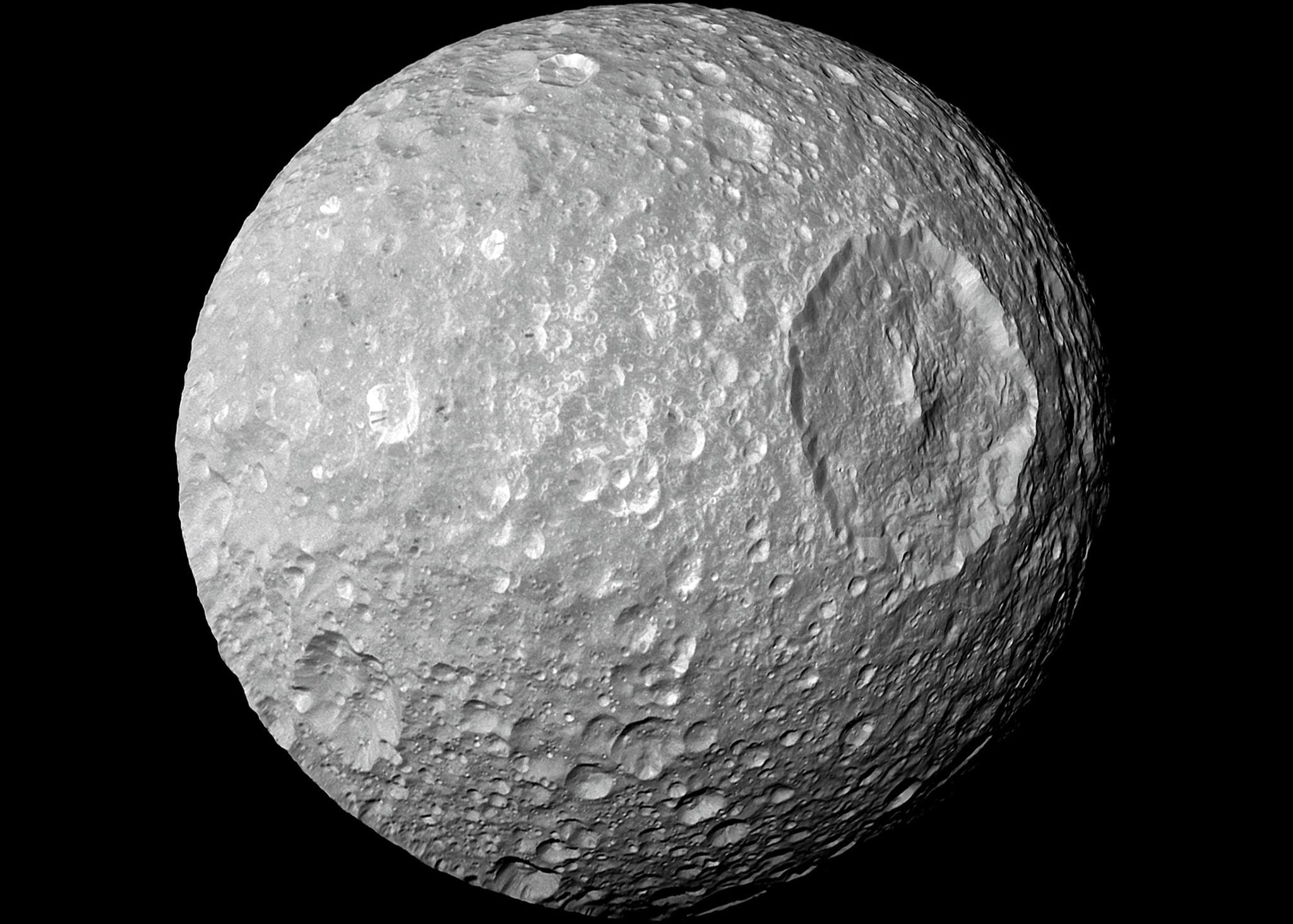
Mimas, the smallest and innermost of Saturn's major moons, is a fascinating celestial body that has captivated the curiosity of astronomers and space enthusiasts alike. Its unique features and intriguing characteristics make it a subject of great interest and study. In this article, we will delve into 10 captivating facts about Mimas, shedding light on its composition, history, and remarkable attributes. From its distinctive appearance to its potential role in shaping the Saturnian system, Mimas holds a wealth of secrets waiting to be uncovered. Join us as we embark on a journey to explore the enigmatic world of Mimas, unearthing the mysteries that shroud this captivating moon.
Key Takeaways:
- Mimas, Saturn’s smallest moon, is named after a Greek Titan and resembles the Death Star. Its freezing temperatures and unique shape make it a fascinating subject for future exploration.
- With its icy composition, tenuous atmosphere, and giant Herschel Crater, Mimas is a captivating celestial body that continues to intrigue astronomers and space enthusiasts.
Mimas is Named After a Titan in Greek Mythology
Mimas is named after a Titan from Greek mythology. In the mythological tradition, Mimas was a giant who fought against the Olympian gods and was ultimately defeated by the god Hephaestus.
The "Death Star" Moon
Mimas gained popular attention due to its striking resemblance to the Death Star, the iconic space station from the "Star Wars" franchise. The enormous Herschel Crater on Mimas gives it the appearance of the fictional superweapon.
Mimas' Unusual Shape
Mimas has a somewhat oblong shape, with its longest dimension spanning approximately 246 miles (396 kilometers). This distinctive shape sets it apart from many other moons in the solar system.
Mimas' Surface Temperature
The surface of Mimas is incredibly cold, with temperatures averaging around minus 292 degrees Fahrenheit (minus 180 degrees Celsius). These frigid conditions make it an inhospitable environment for life as we know it.
Mimas' Low Density
Despite its relatively small size, Mimas has a low density, indicating that it likely consists of a significant amount of water ice beneath its surface. This composition distinguishes it from denser, rocky bodies.
Mimas' Orbit Around Saturn
Mimas orbits Saturn at a relatively close distance, completing a full orbit approximately every 22 hours and 37 minutes. Its proximity to the ringed planet contributes to its gravitational interactions with Saturn's rings.
Mimas' Discovery
Mimas was discovered by the astronomer William Herschel on September 17, Herschel's observations and subsequent calculations revealed the presence of this diminutive moon in the Saturnian system.
Mimas' Unique Geological Features
Mimas is characterized by its prominent Herschel Crater, which spans approximately 80 miles (130 kilometers) in diameter. This enormous impact feature gives the moon its distinctive appearance.
Mimas' Tenuous Atmosphere
While Mimas does not possess a substantial atmosphere, trace amounts of oxygen have been detected around the moon. This tenuous exosphere adds to the intrigue surrounding this small celestial body.
Mimas' Potential for Future Exploration
Given its intriguing characteristics and proximity to Saturn, Mimas holds potential for future exploration missions. Scientists and space agencies continue to study this enigmatic moon to unravel its mysteries.
Mimas, with its captivating history and unique features, remains a captivating subject of study for astronomers and space exploration enthusiasts. As we continue to unlock the secrets of our solar system, Mimas stands as a testament to the wondrous diversity of celestial bodies that populate our cosmic neighborhood.
Conclusion
Mimas, Saturn's enigmatic moon, continues to fascinate astronomers and space enthusiasts alike. With its mysterious Herschel Crater, unique surface features, and potential for future exploration, Mimas offers a wealth of scientific intrigue. As we unravel the mysteries of this captivating moon, we gain valuable insights into the dynamic forces shaping the celestial bodies within our solar system. Mimas serves as a testament to the boundless wonders awaiting discovery beyond our home planet, inspiring us to continue pushing the boundaries of exploration and understanding.
FAQs
What makes Mimas stand out among Saturn's moons?Mimas is distinguished by its prominent Herschel Crater, which gives it a striking resemblance to the Death Star from the Star Wars franchise. This feature has captured the imagination of space enthusiasts and scientists alike, making Mimas an iconic celestial body.
Is there a possibility of future missions to explore Mimas further?While there are no specific missions planned for Mimas at present, the ongoing advancements in space exploration technology could pave the way for future missions to study this intriguing moon in greater detail.
Was this page helpful?
Our commitment to delivering trustworthy and engaging content is at the heart of what we do. Each fact on our site is contributed by real users like you, bringing a wealth of diverse insights and information. To ensure the highest standards of accuracy and reliability, our dedicated editors meticulously review each submission. This process guarantees that the facts we share are not only fascinating but also credible. Trust in our commitment to quality and authenticity as you explore and learn with us.
